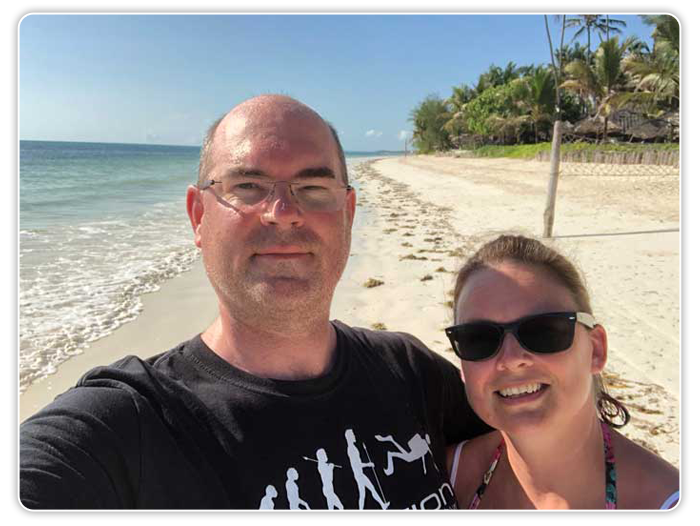Things you need to know when building an online community
1: Critical Mass is… Critical
You might think you can start an online community with a tiny number of people and grow it from there.
It’s a nice idea, but it almost never works. Think of the last time you went to a forum that hadn’t had a new post made in a month. What did you do? You left and never came back.
And that’s what will happen if you don’t start your community off with a critical mass of passionate users or customers.
If the community is going to be based around your brand, then ask yourself if you already have enough loyal people who would jump at the chance to interact with each other in a private community.
If your community is going to be topic based, can you reach enough people to get a few hundred new users in your community in the space of just days?
If so, then you are ready to build a community of your own.
2: Your community is not your community
Take a deep breath because even though you built the community, you do not get to say what is discussed and what isn’t (unless it’s spam).
Don’t sanitize negative feedback. Don’t squash certain topics. And never discourage open discussion.
If you do, you’ll alienate your users and they’ll vanish.
It’s okay that you don’t have all the answers, and it’s okay that you don’t like every topic being discussed. Take deep breaths and let your community grow naturally. Pay attention to what is discussed and if possible, use this information when building and selling your next product or service.
3: Provide ample options
Not everyone will be attracted to your community for the same reasons. That’s why rather than offering only one or two options, see how many different venues you can offer. An online product support forum, a discussion forum, a feature requests area, a knowledge resource base, job boards, software, Q and A, help request area, personal story area… the list is endless.
Try out new features and see where the activity is highest. If a particular feature doesn’t get much attention despite your efforts, change it or eliminate it. Ideally you want each area of your community to be robust and busy with activity. If any one area appears dead and if that happens to be the first place a new person lands, they might think the entire community is dead.
4: Provide a robust infrastructure
If you are using an existing social network for your community, then you don’t have to worry about infrastructure. Of course, you do lose a good deal of control by building your community on another platform such as Facebook Groups. If at any time Facebook decides, for whatever reason, to shut you down, they will do so in heartbeat, and you have no recourse.
If you are hosting your own community, then you need the right software to make your community pleasant and easy to use, as well as almost never crashing.
The idea here is to be on top of how the community runs, but not monitoring every communication. You’re providing the structure and ensuring things run smoothly, but you’re not providing a hall monitor to interfere with users’ communications.
5: Don’t stress about ROI
Naturally you want to look at your dashboard and see how many sales have resulted from your online community. The problem is, you’ll never know for sure. Someone happens upon your community, joins your list from the community and a year later purchases your $3000 coaching program. For 11 months that individual made you no money… or did they? Actually, they told a friend about your community who then told their friends, and those folks bought products from you the week they joined. Someone else couldn’t decide if they wanted to buy your service. Then they found your community, decided they wanted the service, and went back to the original link to purchase.
Really, you’ll never know exactly what your ROI is with your community, so relax and have some fun with it.
Post interesting questions, give some great teachings, and let your community naturally grow and thrive.
Which brings us to…
7 Strategies for Achieving Huge Community Growth
Your online community can help you reach influencers, gain brand recognition, increase your website traffic, get user feedback and connect with new potential customers.
Here are 7 strategies to grow our online community faster and smarter, even if your business is brand new and you don’t have a clue where to start.
1: Start now
The best time to plant a tree is 20 years ago and the second-best time is today. The same goes for starting an online community. While it might be tempting and even smart to wait until you know what the heck you’re doing, today is the right time to start formulating your plan for how your community will work, what it will achieve and how you will get a large influx of new members from day one.
2: Match your community to your audience
A community built around young professionals is going to look and feel far different than one that is tailored to bass fishermen.
Once you have your audience in mind, search online for all the places where they are found. Look at the style, colors, language and so forth of these sites. Your goal isn’t to blend in as much as it is to appeal to what they already know and like. Create a look and feel that your ideal audience is already comfortable with, so that when they visit your community they immediately feel right at home.
3: Promote your community
If you’re building your community on a social media site, you might think your goal is to move people from the community to your website. But if you do this, the energy of your group will be a fraction of what it could be.
And even if you’re building your community on your own site, it’s still vital that you promote the community itself and not just your website. Invite people into the group via email and social media. Use any and all resources you have for bringing in new members, including guest posting, getting mentions from other marketers and even paid advertising.
By actively promoting the group, it will begin to grow on its own.
4: Develop and contribute content
How much time you spend developing content for your community is up to you. It might seem at first like you are spending valuable time creating content for a small group of people who may or may not appreciate it. But over time your community will grow in large part because of your content.
If you don’t build in value for your group, the fact is your community will wither and die. Even just a few minutes per day of participation by you can make a big difference in whether or not people continue to come to your community.
5: Reach outwards for new members
Third party groups and sites are hugely important when it comes to bringing new members into your group. Network with other group owners and forum moderators to cross promote to one another’s communities.
Reach out to news media, influencers and bloggers to get your community on the “best of” lists they promote, as well as getting a guest spot on blogs and podcasts where you invite audience members to your community.
6: Ask for advocates
Ask your current customers, readers, users, influencers, colleagues and so forth to not only participate in your community, but to also become your advocates.
Ask them to share on social media, to invite friends and their own readers, and to help you promote the community for the betterment of all.
You might wonder why people would want to advocate for you and your brand if they’re not being compensated. Sometimes it’s because they truly believe in what you’re doing or in your brand. Other times they like being an early adopter who is on the leading edge of something new, exciting and fun. And sometimes they just like to help you out.
7: Realize your community is for keeps
Building our own online community isn’t a short-term business model. The must successful communities are built to last a decade or more, so get ready to either stay committed to the community or sell it after it becomes a big success.
That’s right, selling your community is a real possibility. Or you might even take it public and sell stock.
While the scope of what we’re discussing isn’t about building and flipping a community, it’s worth knowing that you are building an asset not unlike an active email list or even a specialized social media site that can then be sold for a profit.
Common Q’s and A’s About Building an Online Community
Q: Just to clarify, what is an online community?
A: An online community is a group of people who are unified by some common interest, opinions or goals who meet online.
This might be as small as a private group of your very best customers or even a mastermind group, all the way up to a group of tens of thousands who gather to share experiences, resources and feedback on the chosen topic or niche.
Q: Why do people join online communities?
A: There are probably as many reasons as people, but here are a few:
- To discuss topics that fascinate them
- To engage with a brand, a person or some sort of community figure
- To learn together
- To help them achieve a personal goal
- To work together to achieve a group goal (think environment, politics, etc.)
- To share advice and news
- To meet like-minded people
- To have a sense of belonging
Q: Why would you want to build an online community?
A: There are two main reasons and probably a thousand reasons under each of those main two.
Either you want to build an online community for personal reasons or for professional reasons.
Personal might be because you want to share a passion with others, find like-minded people, network and so forth.
Professional is probably going to about furthering your business. Again, it might be networking, growing your audience, increasing your authority in your niche and so forth.
Let’s say you sell how-to woodworking products. You could join a woodworking community already online (and hopefully you have) but you’re just one little fish of thousands in that community. You have no authority, you’re not well known, and you certainly can’t plug your products.
So, you create your own online woodworking community. You make it different in some way so that it stands apart from other, similar communities.
Over time you grow your membership base with great info and plenty of opportunities to interact with each other.
And you also expose your members to your full line of woodworking how-to products. You’re never pushy about this but you don’t need to be. Those members who are also your customers tell others about the results they get from your products, which naturally sells more of your products.
It’s almost like creating your own shopping channel with built-in testimonials.
Q: What are some more benefits to building my own online community?
A: You can be seen as a leader in your niche. You’re growing your network, your audience and your reputation as a leader.
You get tons of feedback from the very people who are or can become your customers. You learn not just what they think of your products, but also what else they want and how to market it to them. And when the market is shifting, you’ll be among the first to know and hopefully adopt to the changes.
You increase revenue. With a more engaged audience as well as a larger audience, sales will naturally follow.
You’re creating brand ambassadors. People in your own community will speak up about your products and tell others about the results they’ve gotten.
You can create products organically. Some of the most successful course creators, for example, started out by creating learning communities first with Facebook Groups. Their own communities then asked them to create courses for them, and when those courses launched sales were immediate.
Q: What are the most common types of online communities?
A: Learning – members are brought together around a specific course or to learn about a specific topic. Members meet to discuss topics and assignments, collaborate on coursework and engage with each other and the instructor.
Interest – this group is centered on one common interest, such as organic vegetable gardening or building a thriving publishing business.
Profession – this group centers on all aspects of a particular profession and how to excel at their job, such as orthopedic surgeons or household electricians.
Action – this group is dedicated to changing something, such as reversing climate change or getting a particular candidate elected.
Place – these groups have specific geographic boundaries, such as gardening in the northwest or hiking a specific mountain range.
Brand – these groups are based around a specific brand. This could be a common mission, goal or lifestyle that is championed by the brand, such as Nike’s “Just do it.”
Speaking of brands, if you look at Apple, you’ll see they’ve done an incredible job of turning their customers into raving fans who wait in line for hours to just spend hefty sums on the latest version of a product they already own. If you can generate one-tenth this kind of loyalty and with your customers, you’ll be able to build a brand-centric community that will absolutely thrive.
As you might guess, groups can overlap two or more of these categories, such as a group that is dedicated to building thriving chiropractic businesses in the Midwest– that could be interest, place and professional.
Q: What software can I use to build an online community?
A: That’s going to depend on the sort of community you want to build.
If you want to use an established social media network, you could for example start a Facebook Group. The problem with this is Facebook retains control of your Group and can close it at any time for most any reason. The good thing about using a social network such as Facebook is it’s much easier to find and bring in new members, since they’re already on the network to begin with.
But assuming you want to build your own community separate from any social network, here are a few solutions to consider:
Disciple – Building your own community app with no coding required. https://www.disciplemedia.com/ga-community-build
Higher Logic – create lasting relationships with your customer or member base. https://www.higherlogic.com/lp/higher-logic-engagement-platform-brand
Influitive – build a community of advocates and invite your customers, developers, partners and employees to complete challenges. https://influitive.com/
Mighty Networks – build a membership site by community https://www.mightynetworks.com/membership
Mobilize – Build communities that delight your audience and achieve incredible results. https://www.mobilize.io/
Socio – integrated virtual software and live event platform for when you want to hold major events for your online community. https://get.socio.events/socio-event-platform
Tribe Community Platform – fully customizable community platform to connect, engage and retain customers. https://tribe.so
Verint / Telligent – allows you to connect with your audiences in the digital spaces that matter the most. https://www.telligent.com/community-platform/
Vanilla Forums – a community platform that provides a seamless experience. https://page.vanillaforums.com/community-engagement
There are many other Community Website Software providers. These are just a few to get you started.
One Last Thing About Building Your Own Community:
The easiest way to get started is to build a practice community centered around one thing – it could be a product of yours, a product of someone else’s that you love, a particular location like your hometown, a certain breed of pet or so forth.
Think of this community as a learning exercise. This is where you get to make all the mistakes, do things haphazardly, and most of all learn what the heck you are doing.
After 6 months of building and growing this small community, you will be ready to tackle a big one that will potentially yield you six figures in sales per year, and one day allow you to sell it for another six or even seven figures.
The idea is to just jump in now, see how it works, and then build the community you’ve always wanted around the topic or business you can’t get enough of.
Your knowledge and enthusiasm will shine through, people will be attracted to that, and they will become your biggest advocates and ambassadors.
And you’ll also have the time of your life running your own successful online community.
What This Guy Stumbled Across By Accident Nearly TWENTY YEARS AGO Is Anything But Average.

It's Still Banking Him $25,000 - $35,000 EVERY SINGLE MONTH!
Privacy Policy: We value your privacy. You can unsubscribe from receiving future emails with 1 click at any time.























